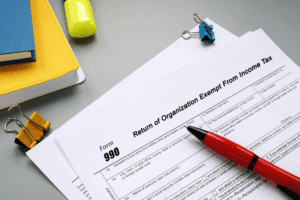
Content


However, one must note that both companies belong to different industrial sectors and have different operating models, business processes, and cash flows that impact the current ratio calculations. Like with other financial ratios, the current ratio should be used to compare companies to their industry peers that have similarbusiness models. Comparing the current ratios of companies across different industries may not lead to productive insights. In this example, Company A has much more inventory than Company B, which will be harder to turn into cash in the short term. Perhaps this inventory is overstocked or unwanted, which eventually may reduce its value on the balance sheet. Company B has more cash, which is the most liquid asset, and more accounts receivable, which could be collected more quickly than liquidating inventory. Although the total value of current assets matches, Company B is in a more liquid, solvent position.
A ratio value lower than 1 may indicate liquidity problems for the company, though the company may still not face an extreme crisis if it’s able to secure other forms of financing. A ratio over 3 may indicate that the company is not using its current assets efficiently or is not managing its working capital properly. However, because the current ratio at any one time is just a snapshot, it is usually not a complete representation of a company’s short-term liquidity or longer-term solvency. The current ratio measures a company’s ability to pay current, or short-term, liabilities with its current, or short-term, assets, such as cash, inventory, and receivables. Current assets listed on a company’s balance sheet include cash, accounts receivable, inventory, and other current assets that are expected to be liquidated or turned into cash in less than one year. The current ratio is calculated simply by dividing current assets by current liabilities. The resulting number is the number of times the company could pay its current obligations with its current assets.
- One must use it along with other liquidity ratios, as no single figure can provide a comprehensive view of a company.
- Small business owners should keep an eye on this ratio for their own company, and investors may find it useful to compare the current ratios of companies when considering which stocks to buy.
- In this scenario, the company would have a current ratio of 1.5, calculated by dividing its current assets ($150,000) by its current liabilities ($100,000).
- We also reference original research from other reputable publishers where appropriate.
- The business currently has a current ratio of 2, meaning it can easily settle each dollar on loan or accounts payable twice.
- His background in tax accounting has served as a solid base supporting his current book of business.
- For example, suppose a company’s current assets consist of $50,000 in cash plus $100,000 in accounts receivable.
To calculate the ratio, analysts compare a company’s current assets to its current liabilities. If a company has $2.75 million in current assets and $3 million in current liabilities, its current ratio is $2,750,000 / $3,000,000, which is equal to 0.92, after rounding. Small business owners should keep an eye on this ratio for their own company, and investors may find it useful to compare the current ratios of companies when considering which stocks to buy. A low current ratio of less than 1.0 might suggest that the business is not well placed to pay its debts.
Current Ratio Formula
This current ratio is classed with several other financial metrics known as liquidity ratios. These ratios all assess the operations of a company in terms of how financially solid the company is in relation to its outstanding debt. Knowing the current ratio is vital in decision-making for investors, creditors, and suppliers of a company. The current ratio is an important tool in assessing the viability of their business interest. While the range of acceptable current ratios varies depending on the specific industry type, a ratio between 1.5 and 3 is generally considered healthy.
- If current liabilities exceed current assets the current ratio will be less than 1.
- The current ratio is calculated by dividing a company’s current assets by its current liabilities.
- A current ratio that is in line with the industry average or slightly higher is generally considered acceptable.
- The current ratio measures a company’s ability to pay current, or short-term, liabilities with its current, or short-term, assets, such as cash, inventory, and receivables.
- If the company’s current ratio is too high it may indicate that the company is not efficiently using its current assets or its short-term financing facilities.
- The current ratio is calculated simply by dividing current assets by current liabilities.
- A low current ratio of less than 1.0 might suggest that the business is not well placed to pay its debts.
Free Financial Modeling Guide A Complete Guide to Financial Modeling This resource is designed to be the best free guide to financial modeling! These are usually defined as assets that are cash or will be turned into cash in a year or less and liabilities that will be paid in a year or less. The higher the resulting figure, the more short-term liquidity the company has. The ratio is only useful when two companies are compared within industry because inter industry business operations differ substantially.
The current ratio helps investors understand more about a company’s ability to cover its short-term debt with its current assets and make apples-to-apples comparisons with its competitors and peers. The current ratio is calculated by dividing a company’s current assets by its current liabilities. Liquidity ratios focus on the short-term and make use of the current assets and current liabilities shown in the balance sheet. The business currently has a current ratio of 2, meaning it can easily settle each dollar on loan or accounts payable twice. For example, a company may have a very high current ratio, but its accounts receivable may be very aged, perhaps because its customers pay slowly, which may be hidden in the current ratio.
What Is A Good Current Ratio?
The issuing company creates these instruments for the express purpose of raising funds to further finance business activities and expansion. Current liabilities are a company’s debts or obligations that are due to be paid to creditors within one year. Current assets are a balance sheet item that represents the value of all assets that could reasonably be expected to be converted into cash within one year. The second factor is that Claws’ current ratio has been more volatile, jumping from 1.35 to 1.05 in a single year, which could indicate increased operational risk and a likely drag on the company’s value. In the first case, the trend of the current ratio over time would be expected to harm the company’s valuation. Meanwhile, an improving current ratio could indicate an opportunity to invest in an undervalued stock amid a turnaround.

A current ratio that is in line with the industry average or slightly higher is generally considered acceptable. A current ratio that is lower than the industry average may indicate a higher risk of distress or default. Similarly, if a company has a very high current ratio compared with its peer group, it indicates that management may not be using its assets efficiently. The current ratio is used to evaluate a company’s ability to pay its short-term obligations—those that come due within a year. Similarly, technology leader Microsoft Corp. reported total current assets of $169.66 billion and total current liabilities of $58.49 billion for the fiscal year ending June 2018. The cash asset ratio is the current value of marketable securities and cash, divided by the company’s current liabilities. Liquidity ratios are a class of financial metrics used to determine a debtor’s ability to pay off current debt obligations without raising external capital.
Current Liabilities
Notes payable are written agreements in which one party agrees to pay the other party a certain amount of cash. The offers that appear in this table are from partnerships from which Investopedia receives compensation.

These include white papers, government data, original reporting, and interviews with industry experts. We also reference original research from other reputable publishers where appropriate. You can learn more about the standards we follow in producing accurate, unbiased content in oureditorial policy. The Structured Query Language comprises several different data types that allow it to store different types of information… Rosemary Carlson is an expert in finance who writes for The Balance Small Business.
How To Calculate The Current Ratio
In other words, it reflects a company’s ability to generate enough cash to pay off all its debts once they become due. It’s used globally as a way to measure the overallfinancial health of a company. Additionally, some companies, especially larger retailers such as Walmart, have been able to negotiate much longer-than-average payment terms with their suppliers. If a retailer doesn’t offer credit to its customers, this can show on its balance sheet as a high payables balance relative to its receivables balance. Large retailers can also minimize their inventory volume through an efficient supply chain, which makes their current assets shrink against current liabilities, resulting in a lower current ratio.
- The cash asset ratio is the current value of marketable securities and cash, divided by the company’s current liabilities.
- Comparing the current ratios of companies across different industries may not lead to productive insights.
- These ratios all assess the operations of a company in terms of how financially solid the company is in relation to its outstanding debt.
- Company A has more accounts payable, while Company B has a greater amount in short-term notes payable.
- Although the total value of current assets matches, Company B is in a more liquid, solvent position.
- A current ratio that is lower than the industry average may indicate a higher risk of distress or default.
The current ratio can yield misleading results under the circumstances noted below. Days payable outstanding is a ratio used to figure out how long it takes a company, on average, to pay its bills and invoices. Eric is currently a duly licensed Independent Insurance Broker licensed in Life, Health, Property, and Casualty insurance. He has worked more than 13 years in both public and private accounting jobs and more than four years licensed as an insurance producer.
The Main Focus Points When Analyzing A Balance Sheet
Bankrate.com is an independent, advertising-supported publisher and comparison service. Bankrate is compensated in exchange for featured placement of sponsored products and services, or your clicking on links posted on this website. Gain in-demand industry knowledge and hands-on practice that will help you stand out from the competition and become a world-class financial analyst.
Julius Mansa is a CFO consultant, finance and accounting professor, investor, and U.S. Department of State Fulbright research awardee in the field of financial technology. Outside of academia, Julius is a CFO consultant and financial business partner for companies that need strategic and senior-level advisory services that help grow their companies and become more profitable. Marketable securities are unrestricted short-term financial instruments that are issued either for equity securities or for debt securities of a publicly listed company.

A current ratio calculated for a company whose sales are highly seasonal may not provide a true picture of the business’s liquidity depending on the time period selected. Companies have different financial structures in different industries, so it is not possible to compare the current ratios of companies across industries. Instead, one should confine the use of the current ratio to comparisons within an industry. When a company is drawing upon its line of credit to pay bills as they come due, which means that the cash balance is near zero. In this case, the current ratio could be fairly low, and yet the presence of a line of credit still allows the business to pay in a timely manner. In this situation, the organization should make its creditors aware of the size of the unused portion of the line of credit, which can be used to pay additional bills.
A ratio under 1.00 indicates that the company’s debts due in a year or less are greater than its assets—cash or other short-term assets expected to be converted to cash within a year or less. A current ratio of less than 1.00 may seem alarming, although different situations can negatively affect the current ratio in a solid company.
A business that finds that it does not have the cash to settle its debts becomes insolvent. The current ratio is a liquidity ratio that measures a company’s ability to cover its short-term obligations with its current assets. Thecurrent ratiois a popular metric used across the industry to assess a company’s short-termliquidity with respect to its available assets and pending liabilities.
It might be required to raise extra finance or extend the time it takes to pay creditors. When evaluating the current ratio, it is important to compare with key competitors and industry averages for a better perspective on the strength or weakness of the number. When the current assets figure includes a large proportion of inventory assets, since these assets can be difficult to liquidate. Net Working Capital is the difference between a company’s current assets and current liabilities on its balance sheet.
If inventory turns into cash much more rapidly than the accounts payable become due, then the firm’s current ratio can comfortably remain less than one. Inventory is valued at the cost of acquiring it and the firm intends to sell the inventory for more than this cost. The sale will therefore generate substantially more cash than the value of inventory on the balance sheet.
Weaknesses of the current ratio include the difficulty of comparing the measure across industry groups, the overgeneralization of the specific asset and liability balances, and the lack of trending information. A current ratio of less than 1 could be an indicator the company will be unable to pay its current liabilities. One limitation of the current ratio emerges when using it to compare different companies with one another. Businesses differ substantially among industries; comparing the current ratios of companies across different industries may not lead to productive insight. Apple, meanwhile, had more than enough to cover its current liabilities if they were all theoretically due immediately and all current assets could be turned into cash. The current ratio can be a useful measure of a company’s short-term solvency when it is placed in the context of what has been historically normal for the company and its peer group. For example, a normal cycle for the company’s collections and payment processes may lead to a high current ratio as payments are received, but a low current ratio as those collections ebb.
Perhaps more significant would be a sharp decline in the current ratio from one period to the next, which may indicate liquidity issues. Financial modeling is performed in Excel to forecast a company’s financial performance. Amanda Bellucco-Chatham is an editor, writer, and fact-checker with years of experience researching personal finance topics. Specialties include general financial planning, career development, lending, retirement, tax preparation, and credit. First, the trend for Claws is negative, which means further investigation is prudent. Perhaps it is taking on too much debt or its cash balance is being depleted—either of which could be a solvency issue if it worsens. The trend for Horn & Co. is positive, which could indicate better collections, faster inventory turnover, or that the company has been able to pay down debt.
In many cases, a creditor would consider a high current ratio to be better than a low current ratio, because a high current ratio indicates that the company is more likely to pay the creditor back. If the company’s current ratio is too high it may indicate that the company is not efficiently using its current assets or its short-term financing facilities.
Author: Edward Mendlowitz













